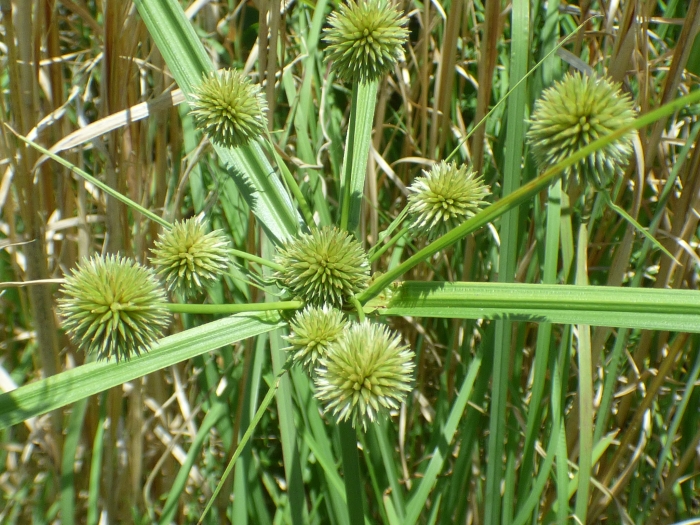Globe Flatsedge
(Cyperus echinatus)
Globe Flatsedge (Cyperus echinatus)
/
/

kcthetc1
Public Domain
Image By:
kcthetc1
Recorded By:
Copyright:
Public Domain
Copyright Notice:
Photo by: kcthetc1 | License Type: Public Domain | License URL: http://creativecommons.org/publicdomain/zero/1.0/ | Rights Holder: kcthetc1 | Publisher: iNaturalist | Date Created: 2021-06-13T12:52:45-07:00 |


















































Estimated Native Range
Summary
Cyperus echinatus, commonly known as Globe Flatsedge, is a perennial sedge, that is native to wet meadows, marshes, and the edges of ponds and streams in the Eastern United States. It typically grows to a height of 2-3 feet (0.6-0.9 meters) and can spread to a width of 4-6 feet (1.2-1.8 meters). This sedge is characterized by its round, spiky inflorescences that are greenish-brown in color and appear in the summer. The plant has a clumping form and is often used in rain gardens and as a ground cover in wet areas.
Globe Flatsedge is valued for its ability to thrive in wet conditions and is often used to stabilize soil in areas prone to erosion. It is also appreciated for its unique globe-shaped seed heads, which add textural interest to water gardens and naturalized areas. In cultivation, it prefers full sun to part shade and requires medium amounts of water, ideally in soils with fast drainage. While it is generally low-maintenance, it can spread aggressively if conditions are ideal, which should be considered when planting in smaller spaces.CC BY-SA 4.0
Globe Flatsedge is valued for its ability to thrive in wet conditions and is often used to stabilize soil in areas prone to erosion. It is also appreciated for its unique globe-shaped seed heads, which add textural interest to water gardens and naturalized areas. In cultivation, it prefers full sun to part shade and requires medium amounts of water, ideally in soils with fast drainage. While it is generally low-maintenance, it can spread aggressively if conditions are ideal, which should be considered when planting in smaller spaces.CC BY-SA 4.0
Plant Description
- Plant Type: Grass
- Height: 2-3 feet
- Width: 4-6 feet
- Growth Rate: Moderate
- Flower Color: N/A
- Flowering Season: Summer, Fall
- Leaf Retention: Deciduous
Growth Requirements
- Sun: Full Sun, Part Shade
- Water: Medium
- Drainage: Fast
Common Uses
Erosion Control, Low Maintenance
Natural Habitat
native to wet meadows, marshes, and the edges of ponds and streams in the Eastern United States
Other Names
Common Names: Teasel Sedge
Scientific Names: , Cyperus echinatus, Mariscus globulosus, Cyperus ovularis, Mariscus ovularis, Cyperus ovularis var. sphaericus, Cyperus wolfii, Kyllinga ovularis, Mariscus sphaericus, Scirpus echinatus
GBIF Accepted Name: Cyperus echinatus (L.) Alph.Wood